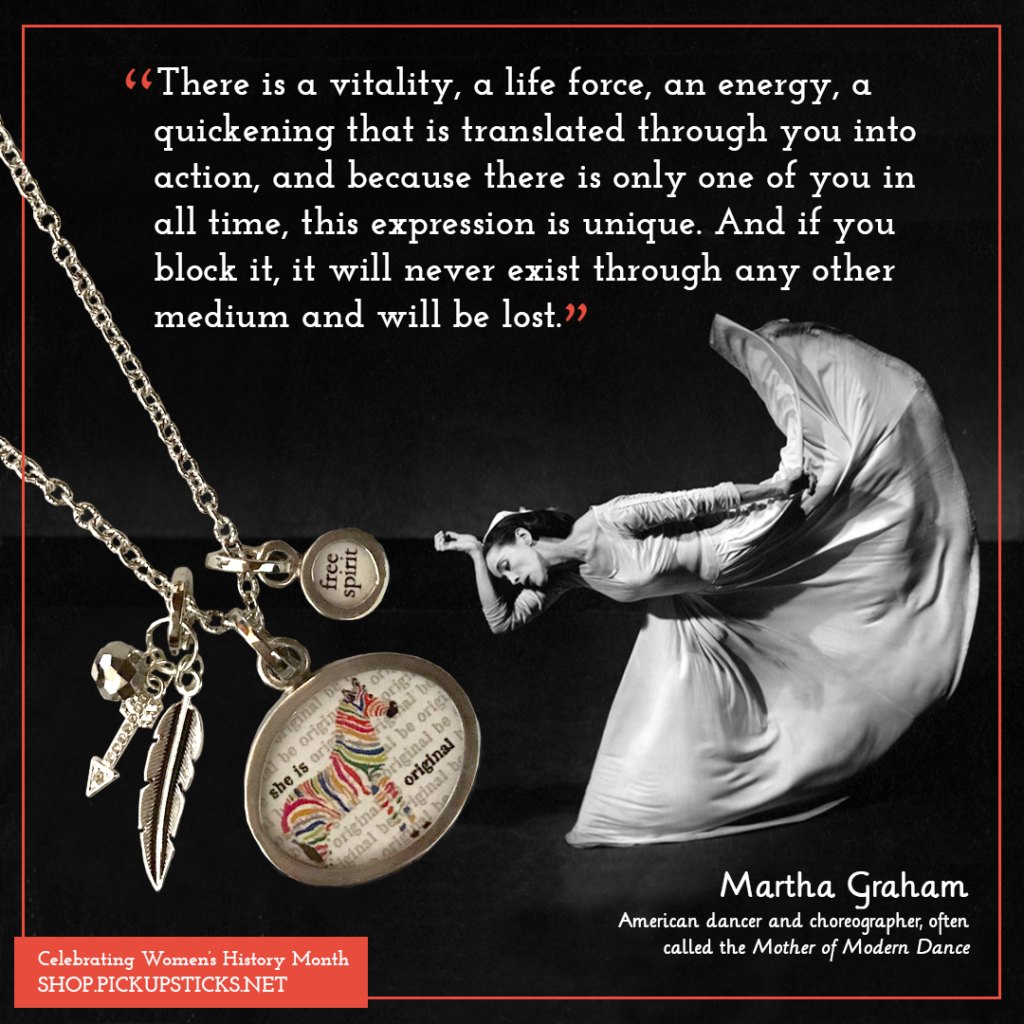March is Women’s History Month. In celebration, Pick Up Sticks Jewelry Company is featuring prominent women throughout the month and highlighting the impact they had on the world. And to add a little more fun to the history lesson, we are selecting jewelry charms that embody each woman’s unique personality and accomplishments. Today we are celebrating Martha Graham, the Mother of Modern Dance.
Intrigued with Movement and Emotion
Born in Allegheny, Pennsylvania, in 1894, Martha Graham’s influence on dance is monumental, oftentimes compared to the impact that Picasso had on painting. Her father, George Graham, was an early practitioner of psychiatry. His focus was on nervous disorders and diagnosis through attention to physical movements. This acknowledgement of the body’s ability to express inner senses through movement was a strong influence on Martha’s creative work and her desire to dance.
Pushing Boundaries
Graham felt that ballet’s flow and grace neglected the portrayal of emotions and spiritual passions, and in 1926 she began teaching a group of students her style of dance which focused on the expressive capacity of the human body. This was the start of The Martha Graham Studio which she led for the next 66 years. Artists, classical dancers, and actors, including Bette Davis, sought Graham out in order to learn how to use their bodies expressively.
Despite the fact that many early critics described her work as “ugly,” Graham’s genius became increasingly recognized and respected over time, and her advances in dance are considered to be an important achievement in America’s cultural history. The Graham technique is a highly regarded form of movement taught by dance institutions around the globe.
In 1969 she announced her retirement from the stage, but continued to teach and choreograph until her death at the age of 96. Martha Graham created 181 masterpiece dance compositions during her career. She was the first choreographer to regularly employ Asian-American and African-American dancers. Her attention to human emotion and perseverance is considered to be one of the greatest individual achievements in American culture. She was the first dancer to perform at the White House and to act as a cultural ambassador abroad.
Charming Martha
Charms that we feel embody Graham’s spirit and accomplishments are “She Is Original,” our “Mini-Feather” Itty Bitty, and “Free Spirit.” The first charm clearly embodies Martha’s drive to push boundaries and follow her unique vision. Two of Graham’s pivotal pieces, “Frontier” and “Appalachian Spring,” inspire our “Mini-Feather” choice. Finally, “Free Spirit” celebrates her drive to reach beyond the conventional, creating a nontraditional and passionate art form that has inspired generations of dancers and artists of all kinds.
Sources
“Martha Graham: Revolt and Passion.” PBS, American Masters, [online] Available at: http://www.pbs.org/wnet/americanmasters/martha-graham-about-the-dancer/497/ [Accessed 09 Mar. 2019].
“History – Martha Graham Dance Company.” Martha Graham Dance Company, [online] Available at: http://www.marthagraham.org/history/ [Accessed 09 Mar. 2019].
“Martha Graham.” National Women’s Hall of Fame, [online] Available at: https://www.womenofthehall.org/inductee/martha-graham/ [Accessed 09 Mar. 2019].

